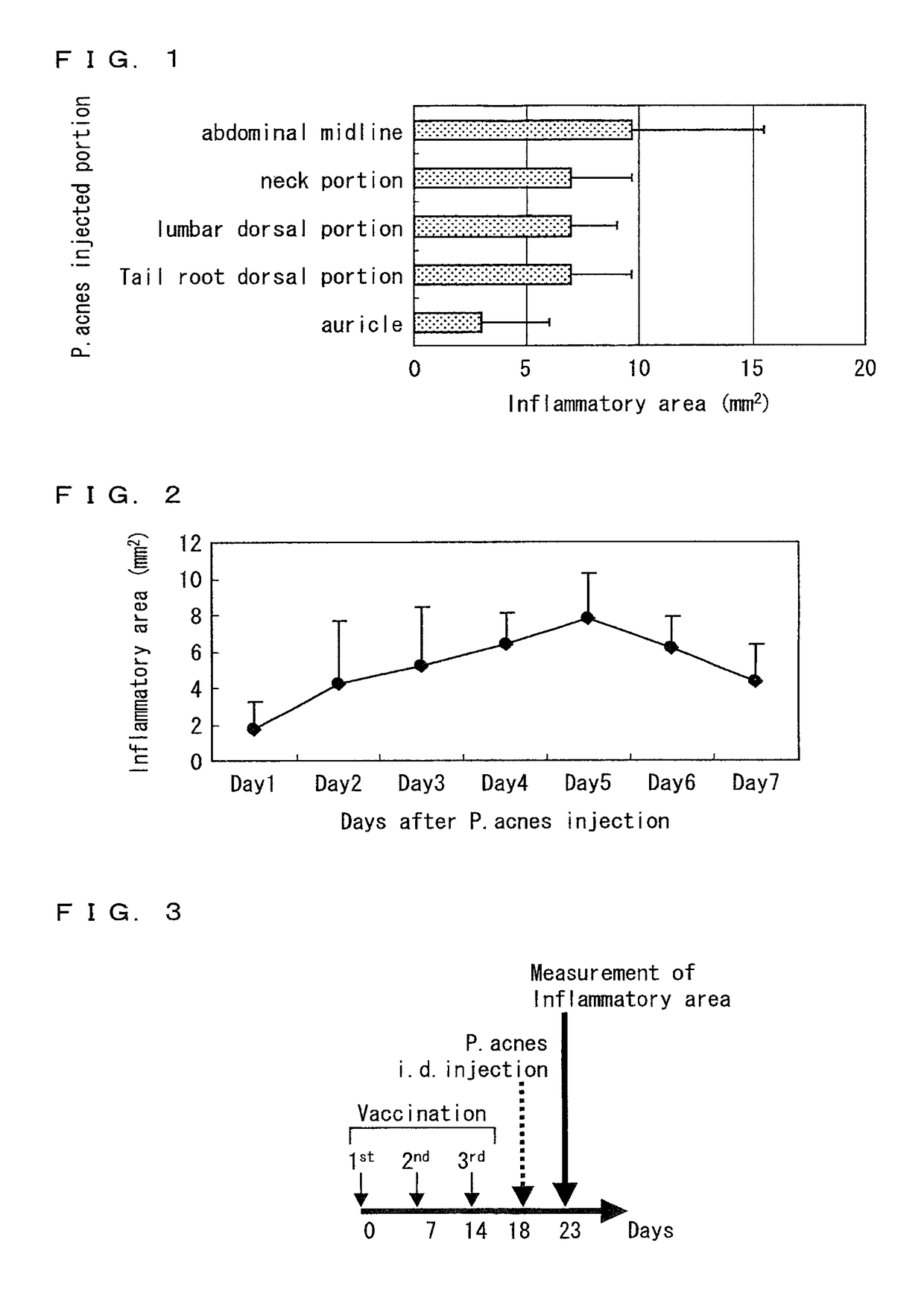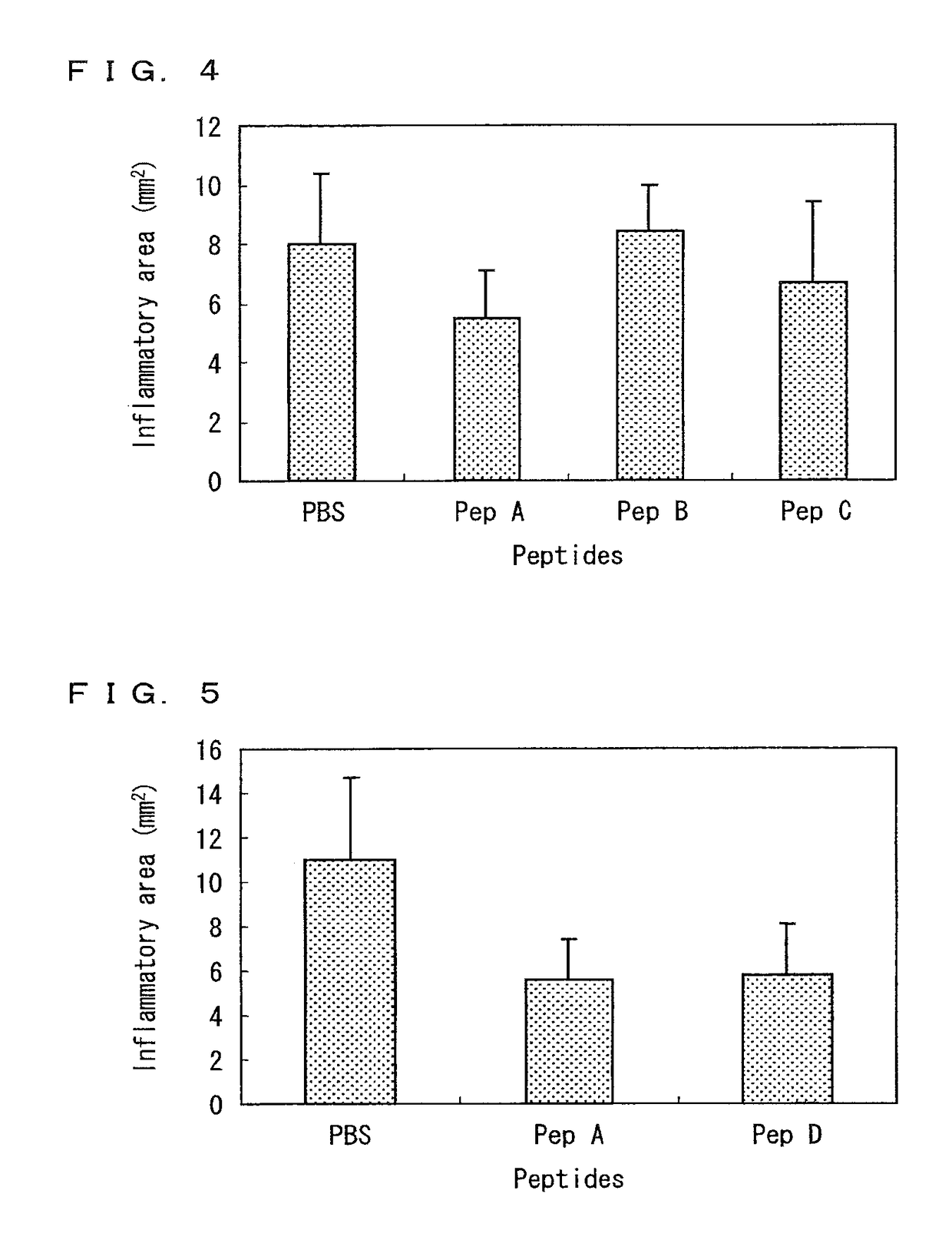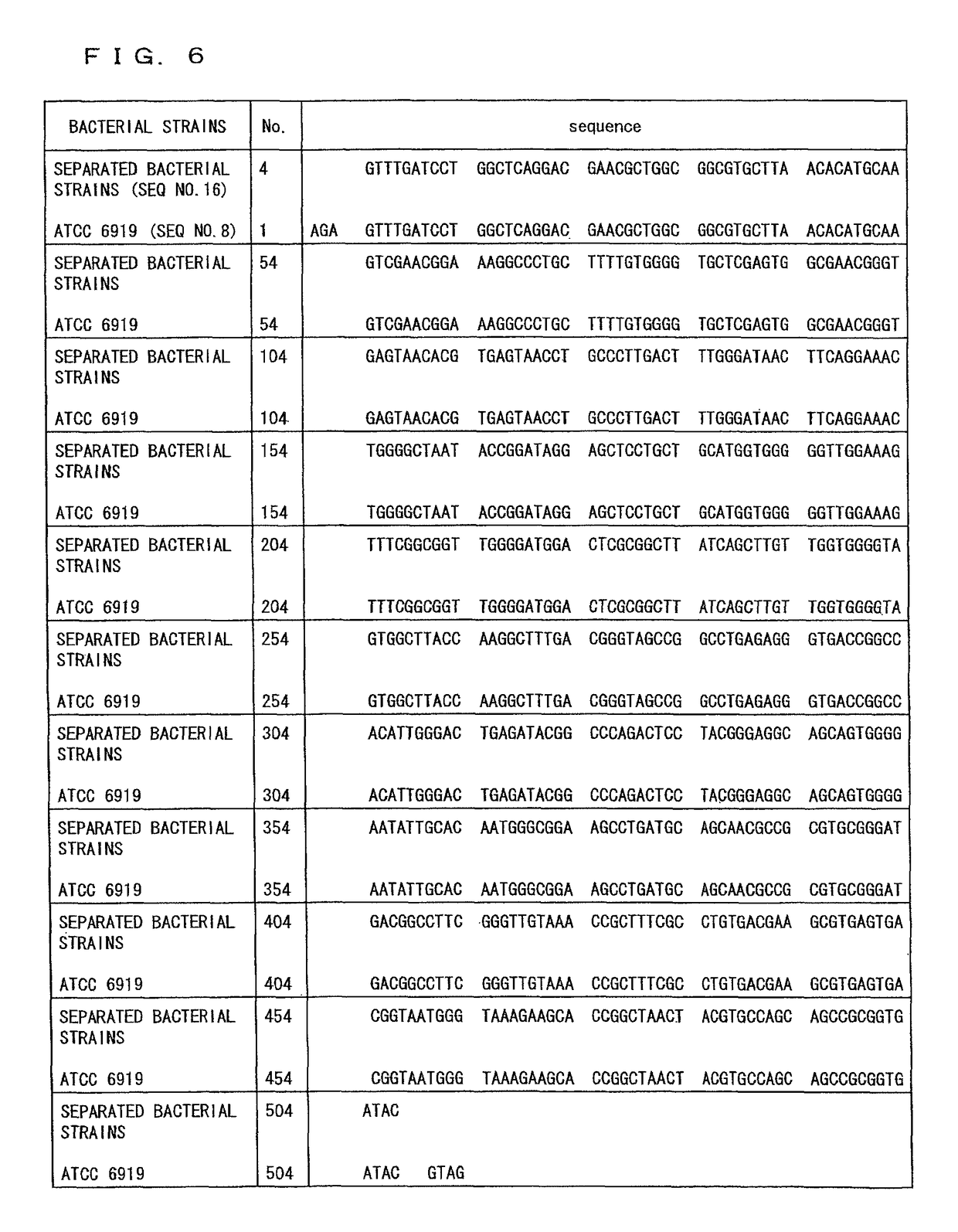Compositions, methods and therapies for administering antigen peptide
a technology of antigen peptide and composition, applied in the field of antigen peptides, can solve problems such as difficult treatmen
- Summary
- Abstract
- Description
- Claims
- Application Information
AI Technical Summary
Benefits of technology
Problems solved by technology
Method used
Image
Examples
example 1
Culture of Propionibacterium Acnes
[0097]Strains of Propionibacterium acnes (hereinafter abbreviated as “P. acnes”) (ATCC6919) were purchased from RIKEN BioResource Center (JCM Catalogue No. 6425). The strains of the purchased P. acnes were cultured according to culture condition information from the center. Specifically, in an anaerobic glove box, the strains of the P. acnes were suspended in 100 ml of a GAM culture medium (manufactured by Nippon Suisan Kaisha, Ltd.) and cultured anaerobically using a vial at 37° C. for three days.
example 2
Causing Intradermical Inflammation in Mouse Skin by P. Acnes
[0098]Living bacterial cells of P. acnes were put in a deaerated physiological saline while keeping an anaerobic condition to prepare a suspension with the number of the living bacterial cells of P. acnes of 5×107 cells / ml, 1×108 cells / ml, or 5×108 cells / ml. The anaerobic condition was kept by spraying a nitrogen gas. The number of the living bacterial cells of P. acnes was calculated based on the assumption that OD measurement value of 0.98-1.02 at 550 nm measured by a spectrophotometer corresponds to 5x108 cells / ml, with reference to Ramstad S. et al., Photochem. Photobiol. Sci., 2006, 5, 66-72.
[0099]50 μl of the prepared suspension of P. acnes was intradennically injected into shaven abdominal midlines, neck portions, lumbar dorsal portions, tail root dorsal portions, and auricles of male Balb / c mice (9-10 weeks old). The inflammatory areas (major axis x minor axis: mm2) at individual portions to which the suspension wa...
example 3
Preparation of Peptide
[0102]The powder of PepA which was a peptide consisting of the amino acid sequence indicated by SEQ NO. 1 or the powder of PepD which was a peptide consisting of the amino acid sequence indicated by SEQ NO. 3 was dissolved in physiological saline (produced by Otsuka Pharmaceutical Co., Ltd.) to prepare 800 μg / ml of a peptide solution.
[0103]As Comparative Examples, there were used PepB which was a peptide corresponding to 10th-26th amino acid residues in a membrane protein of Propionibacterium acnes which consists of the amino acid sequence registered in Genbank / EMBL / DDBJ accession No. AAT81852, and PepC which was a peptide corresponding to 145th-166th amino acid residues in a membrane protein of Propionibacterium acnes which consists of the amino acid sequence registered in Genbank / EMBL / DDBJ accession No. YP_055518. Table 1 shows information on the amino acid sequence in individual peptides. The sequences used as the Comparative Examples were amino acid sequenc...
PUM
| Property | Measurement | Unit |
|---|---|---|
| weight | aaaaa | aaaaa |
| weight | aaaaa | aaaaa |
| concentrations | aaaaa | aaaaa |
Abstract
Description
Claims
Application Information
 Login to View More
Login to View More - R&D
- Intellectual Property
- Life Sciences
- Materials
- Tech Scout
- Unparalleled Data Quality
- Higher Quality Content
- 60% Fewer Hallucinations
Browse by: Latest US Patents, China's latest patents, Technical Efficacy Thesaurus, Application Domain, Technology Topic, Popular Technical Reports.
© 2025 PatSnap. All rights reserved.Legal|Privacy policy|Modern Slavery Act Transparency Statement|Sitemap|About US| Contact US: help@patsnap.com



